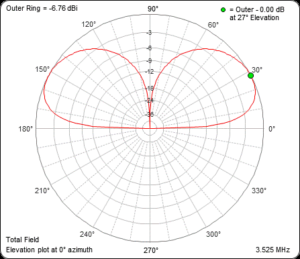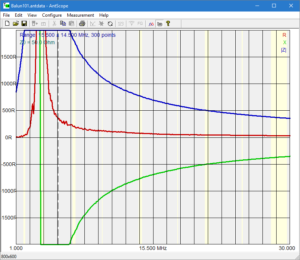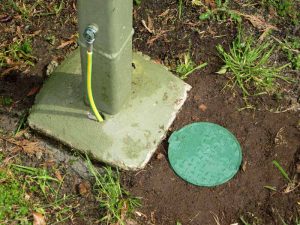The OCF short vertical dipole for HF has become popular, particularly disguised as a flag pole for low impact installations and encouraged by claims of outstanding performance. The antenna was described in QST and a commercial version was available at time of writing.
The rationale for the design is that it is a short dipole, not requiring radials, and feed point offset downwards by 30% as an optimal value for performance (driven by often unsound assessments of coax loss).
Claims include:
Off-Center Fed Vertical Dipole design means no radials, 90% efficient or better across 80m – 10m
Above is the promising gain plot for one of the commercial implementations, it is only one S point (6dB) behind a quarter wave vertical with 4 buried radials. Continue reading OCF short vertical dipole for HF










